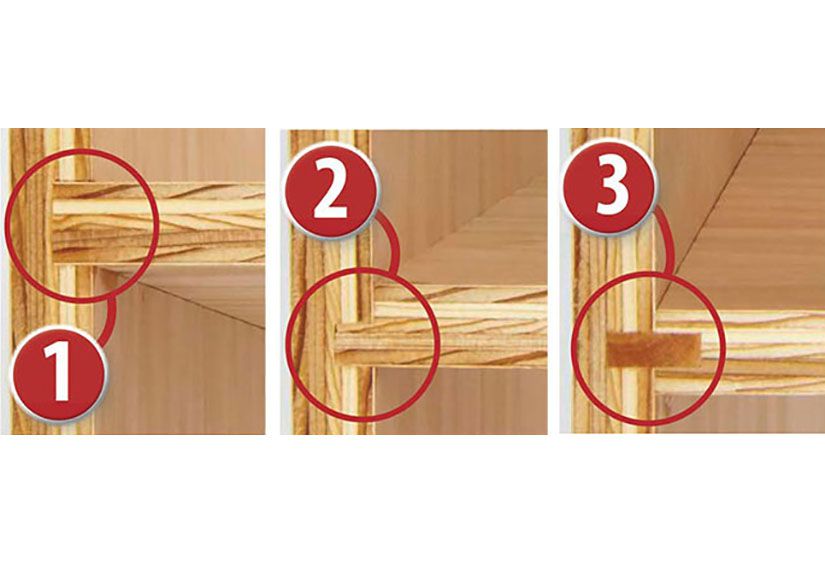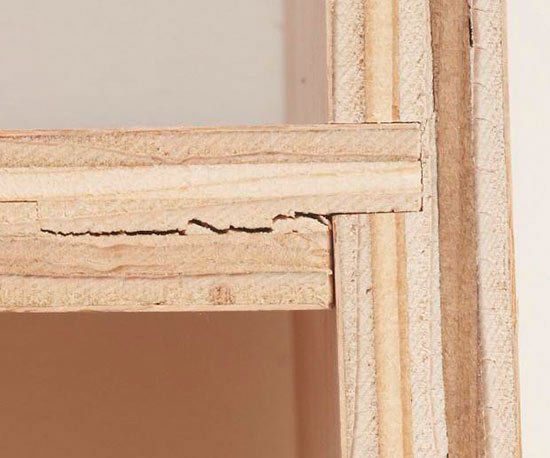Can you joint plywood? If you’re curious about whether it’s possible to join plywood pieces together, then you’ve come to the right place! Joining plywood is a common practice in woodworking and can be done using various methods. In this article, we’ll explore the different ways you can join plywood and provide you with some tips and tricks along the way. So, let’s dive in and discover the world of plywood joinery!
When it comes to joining plywood, there are several options to choose from. Whether you’re working on a DIY project or a professional endeavor, it’s important to know which method suits your needs best. From using screws and nails to adhesives and biscuits, each technique has its own advantages and considerations. We’ll break down these methods for you and offer insights into when and how to use them effectively.
Joining plywood requires careful planning and execution to ensure strong and secure connections. The right technique can make all the difference in creating sturdy and durable plywood joints. So, whether you’re a woodworking enthusiast or just getting started, buckle up and let’s explore the wonderful world of joining plywood together!
To join plywood, you’ll need a few tools and follow these steps:
1. Measure and mark the joints.
2. Set up your circular saw with a blade appropriate for plywood.
3. Make your cuts along the marked lines.
4. Apply wood glue to the joint edges.
5. Align the joints and use clamps for a tight fit.
6. Let the glue dry before removing the clamps.
Remember to always follow safety guidelines when working with tools. Happy woodworking!

Can You Joint Plywood? Exploring the Possibilities
Are you considering using plywood for your next DIY project? Perhaps you’re wondering if it’s possible to joint plywood and achieve a seamless finish. In this article, we’ll delve into the topic of joining plywood and explore various techniques and methods that you can employ to create strong and aesthetically pleasing joints. Whether you’re a woodworking enthusiast or a beginner, this guide is designed to provide you with the knowledge and insights you need to successfully joint plywood.
Understanding Plywood Joints
Before we explore the specifics of joining plywood, it’s important to understand the different types of joints commonly used in woodworking. Whether you’re working with hardwood, softwood, or plywood, the principles of jointing remain the same. Here are three popular types of joints:
Dowel Joints
Dowel joints are a classic and reliable method of joining plywood. This technique involves drilling holes in both pieces of plywood and inserting dowels to join them together. Dowel joints provide excellent strength and prevent visible fasteners from appearing on the surface of the plywood. To create a dowel joint, measure and mark the exact locations for the dowel holes, drill the holes with precision, and apply glue before inserting the dowels.
Biscuit Joints
Biscuit joints are another widely used method for joining plywood. This technique involves using an oval-shaped, compressed wood biscuit that is coated in glue and inserted into slots cut into the plywood. The biscuits swell when they come into contact with the glue, creating a strong bond. Biscuit joints are popular for their simplicity and ability to align and reinforce plywood edges.
Butt Joints with Reinforcements
For simple and quick assembly, butt joints can be used to join plywood. However, to ensure structural integrity and prevent the joint from separating over time, it’s essential to reinforce these joints with appropriate mechanisms. Options include using corner braces, plywood splines, or metal fasteners. These reinforcements offer additional strength and stability to the joint, making it more durable and reliable.
Factors to Consider When Jointing Plywood
Now that we’ve explored some popular methods of joining plywood, let’s delve into the factors you should consider before deciding which technique to use. Keep in mind that different projects and requirements may call for specific jointing methods. Here are three essential factors to consider:
Project Type and Size
The type and size of your project will influence the choice of jointing method. For instance, if you’re working on a small decorative item, a simple butt joint with reinforcement may suffice. However, if you’re constructing a large piece of furniture that requires more strength and stability, dowel or biscuit joints would be more appropriate. Consider the specific demands and stresses your project will endure to ensure you choose the correct jointing method.
Aesthetics
The desired aesthetic appeal of your project can also dictate the jointing method. Do you want seamless joints that are virtually invisible, or are you aiming for a more decorative, exposed joint? Depending on your preference, dowel and biscuit joints can provide a cleaner finish with nearly invisible seams. On the other hand, butt joints with reinforcements may create a more rustic and distinctive look.
Skill Level and Tools
Consider your skill level and the tools you have available before selecting a jointing method. While some techniques may require specialized tools like dowel jigs or biscuit joiners, others can be accomplished with basic woodworking tools. Additionally, certain methods may be more suitable for beginners, whereas others may require more experience and precision.
Common Challenges and Tips for Successful Jointing
While jointing plywood can yield excellent results, it’s important to be aware of potential challenges and employ the right techniques to overcome them. Here are some common challenges you may encounter and tips to achieve successful joints:
Ensuring Alignment
Aligning plywood edges precisely is crucial for strong, seamless joints. To ensure proper alignment, use clamps or weights to hold the pieces together securely while the glue dries. You can also employ reference lines or marks to guide your joints during assembly.
Choosing the Right Glue
The type of glue you use plays a significant role in joint strength and durability. Opt for a high-quality woodworking glue that is specifically designed for joining plywood. Ensure the glue is compatible with the type of wood and jointing method you are using and follow the manufacturer’s instructions regarding application and drying time.
Surface Preparation
Before applying glue and joining the plywood, it’s essential to prepare the surfaces properly. Ensure that the edges are smooth, free from debris, and have a tight fit. Sanding the edges lightly can help create a better bond between the plywood pieces.
Final Thoughts on Jointing Plywood
Jointing plywood is not only possible but also an essential skill for woodworking enthusiasts and professionals. Whether you’re using dowel joints, biscuit joints, or butt joints with reinforcements, the key to successful jointing lies in precision, proper preparation, and selecting the appropriate technique for your project. By considering factors like project type and size, aesthetics, and your skill level, you can achieve strong, seamless joints that enhance the overall quality and appearance of your plywood creations. So go ahead and explore the possibilities of jointing plywood – the results will undoubtedly be rewarding!
Key Takeaways: Can You Joint Plywood?
- Yes, you can joint plywood by using various methods.
- One method is to use a router and a straight-edge guide to create a clean and straight joint.
- Another method is to use a biscuit joiner to align and strengthen the joint.
- Additionally, you can use wood glue and clamps to secure the joint and ensure a strong bond.
- Remember to sand the joint and apply a finish to achieve a smooth and seamless result.
Note: Always be cautious and seek proper guidance when working with tools and equipment to avoid accidents.
Frequently Asked Questions
Welcome to our FAQ section, where we answer common questions about jointing plywood. If you’re wondering about the process of joining plywood, you’ve come to the right place. Below, we address some of the key concerns you may have when it comes to jointing plywood.
Can you joint plywood without any tools?
No, you typically need tools to join plywood. The most common method involves using a power tool, such as a table saw or a circular saw, to cut the plywood into the desired shape and size. You might also need other tools like a drill, nail gun, or screws to secure the joints. While it’s possible to joint plywood without power tools, it can be challenging and time-consuming.
If you’re planning on joining plywood without tools, you could explore alternative methods such as using wood glue and clamps to create stronger bonds between the plywood pieces. However, it’s important to note that using tools will generally yield more precise and durable joints.
What are the different methods for joining plywood?
There are several methods you can use to join plywood, depending on your project’s requirements and your level of expertise. Some common methods include butt joints, rabbet joints, dado joints, and tongue and groove joints.
Butt joints are simple and involve joining two plywood edges together. Rabbet joints involve removing a section of plywood from one piece to create a ledge for the other piece to fit into. Dado joints involve creating a groove in the plywood to connect two pieces. Tongue and groove joints have interlocking edges that fit snugly together.
Do I need to use glue when joining plywood?
Using glue when joining plywood is often recommended, as it helps create a stronger bond between the pieces and ensures a more secure joint. Wood glue is typically the best adhesive to use for plywood joints because it provides a strong and durable hold.
When applying the glue, make sure to spread it evenly along the joint surfaces and clamp the pieces together tightly. This will help ensure that the glue fully adheres to the plywood and creates a solid connection. Remember to follow the manufacturer’s instructions for the specific type of glue you’re using.
How can I make strong joints when joining plywood?
To make strong joints when joining plywood, there are a few key factors to consider. First, ensure that the edges of the plywood are clean, straight, and properly aligned. This will help create a tight joint with maximum surface contact for the glue or fasteners.
Next, use appropriate tools and techniques to join the plywood. This may include using clamps, screws, or nails to hold the pieces together. Additionally, make sure to choose the right type of joint for your project, as different joint designs offer varying levels of strength and stability.
Can I join plywood without using fasteners?
Yes, it is possible to join plywood without using fasteners like screws or nails. One method is to use wood glue and clamps to hold the plywood pieces together until the glue dries. This technique can create strong and durable joints, particularly if the plywood edges have been properly prepared and aligned.
However, it’s important to keep in mind that using fasteners, such as screws or nails, can add extra strength and stability to the joints, especially in applications where the plywood will undergo heavy loads or stress. Consider the specific requirements of your project and consult with a woodworking expert if you’re unsure about whether to rely solely on glue or to use fasteners as well.

7 Methods Of Plywood Corner Joinery | How To Join Plywood In A Corner
Summary
So, can you join plywood? The answer is yes, you can. There are several methods you can use, including gluing, nailing, or screwing the plywood together. Each method has its own pros and cons, so it’s important to choose the right one for your project.
If you decide to glue the plywood, make sure to use a high-quality wood adhesive and follow the manufacturer’s instructions. Nailing the plywood is another option, but it may cause splitting or visible nail holes. Lastly, screwing is a secure method, but it requires drilling pilot holes to prevent splitting.
Remember to choose the appropriate method based on your project’s needs and use proper safety precautions. Whether you’re building furniture, cabinets, or a simple DIY project, joining plywood is definitely doable!
